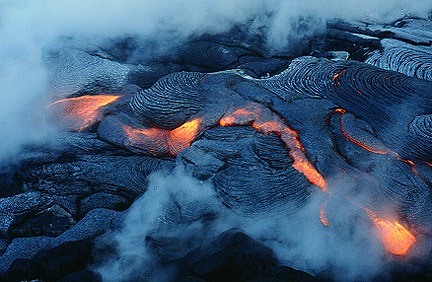 |
Cooling Lava |
Igenous Rock Textures
The result of either extrusive or intrusive cooling is evident in the final texture of the igneous rock. The texture of an igneous rock is a measure of crystal size within the rock. Igneous textures are described by a number of terms. The phaneritic texture describes coarse grains or rocks that contain mostly large crystals. A rock with an aphanitic texture has a fine grain; it contains mostly small crystals. Observationally, a rock that exhibits a phaneritic texture would have visible crystals, as seen below. Rocks that contain both large and small crystals have a porphorytic texture.
Other igneous textures that typical of surface formation are associated with volcanic activity. These textures are pyroclastic, vesicular, or glassy textures. Pyroclastic textures result from the compaction of volcanic ash and explosive debris. As a result this texture typically has a gritty feel, and the rock contains tiny bits of fragmented material.
A vesicular texture is caused when dissolved gases and other volatile components of a magma erupt from the liquid portion due to a decrease in pressure. This causes the magma to foam up, and the resulting rock to be riddled with hole-like structures called vesicles. Finally, when magma cools so quickly that the molecular components have no time to form even the smallest crystals a glassy texture will result.
